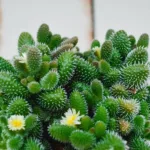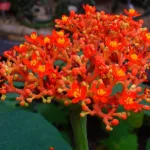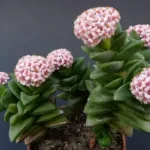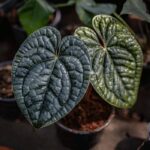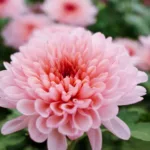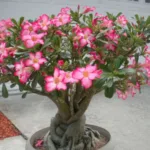Table of Contents
Introduction
Delosperma echinatum, popularly known as “pink carpet”, is a succulent plant belonging to the Aizoaceae family. Originally from the arid regions of South Africa, this species is admired for its ornamental beauty and its ability to thrive in adverse conditions.
With its fleshy, thorny leaves, Delosperma echinatum forms dense carpets that stand out in rock gardens, flowerbed borders and in pots. Its delicate flowers, in shades of pink and yellow, appear during spring and summer, adding a touch of vibrant color to the environment.
Meaning of Delosperma echinatum
In addition to its remarkable resistance and beauty, Delosperma echinatum carries symbolic meanings. In the language of flowers, this succulent represents resilience and perseverance in the face of adversity. Its ability to flourish even in arid conditions and its ability to spread and cover difficult areas are interpreted as metaphors for overcoming challenges and seeking prosperity even in difficult situations. Thus, growing Delosperma echinatum not only adds beauty to the environment, but can also serve as an inspiring reminder of strength and determination.
| Item | Information |
|---|---|
| Common Name | Pink Carpet |
| Botanical Name | Delosperma echinatum |
| Family | Aizoaceae |
| Plant Type | Succulent |
| Adult size | Up to 10 cm high and 30 cm wide |
| Sun exposure | Full sun |
| Soil type | Drainable, sandy |
| soil pH | Slightly acidic to neutral (6.0 – 7.0) |
| Flowering Season | Spring and summer |
| Flower color | Pink and yellow |
| Native Area | South Africa |
| Toxicity | Non-toxic |
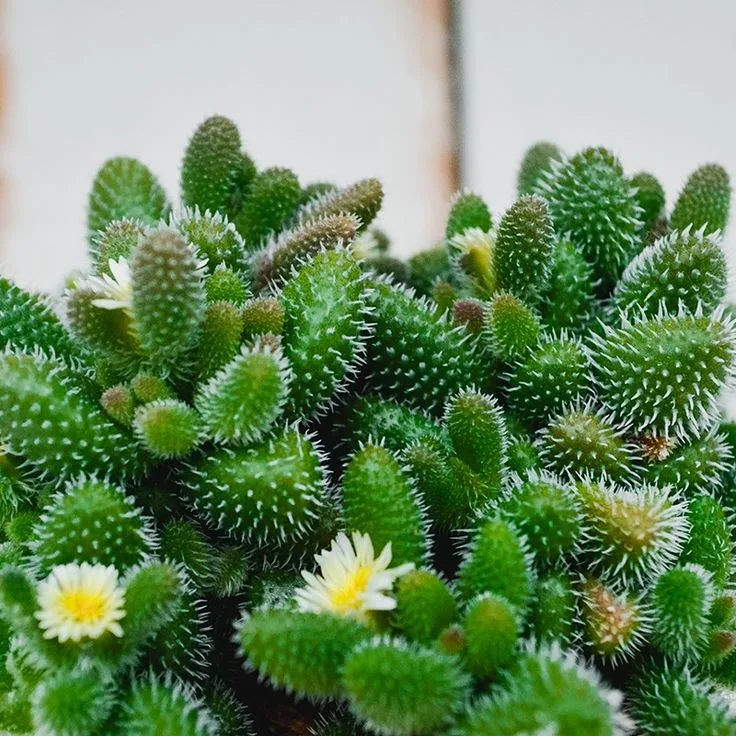
How to Care for Delosperma echinatum
In this section, we’ll explore the essential care to ensure that your Delosperma echinatum blooms and thrives.
Light
Delospermaechinatum prefers locations with full sun exposure, where it can receive direct sunlight for several hours a day. Make sure you position your plant in a well-lit spot to ensure healthy growth and lush flowering.
Soil
The soil for Delosperma echinatum should be drainable and preferably sandy. Ensure good drainage to avoid water accumulating in the roots, which can lead to rotting. Adding sand or perlite to the substrate can help improve drainage.
Water
Although it is a succulent, Delosperma echinatum needs regular water during the active growing period, especially during the warmer months. However, it is crucial to avoid overwatering, as waterlogging the soil can lead to root rot. Let the soil dry out between waterings to avoid excessive moisture problems.
Temperature and humidity
This succulent prefers moderate to hot temperatures and can tolerate intense heat, as long as there is good ventilation and the humidity is controlled. Avoid very low temperatures, especially during winter, as Delosperma echinatum is sensitive to frost.
Fertilizing
Delosperma echinatum doesn’t require frequent fertilization, but an application of balanced slow-release fertilizer in early spring can stimulate healthy growth and lush flowering. Make sure you follow the manufacturer’s instructions and don’t exceed the recommended dose to avoid damaging the roots.
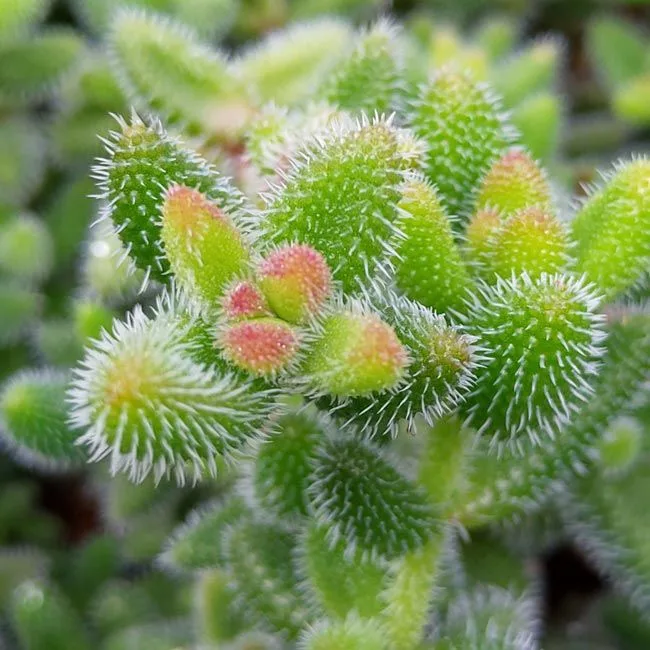
How to Cuttings Delosperma echinatum
If you want to propagate your Delosperma echinatum through cuttings, here are some simple steps to follow:
How to Make Cuttings
- Selecting the Mother Plant: Choose a healthy, mature plant to serve as the mother plant for your cuttings. Make sure the plant is free from disease and pests.
- Preparing the Cut: With a clean, sharp knife, make a clean cut in one of the healthy stems of the mother plant. The cut should be about 5 to 7 centimeters long.
- Drying the cutting: Leave the cutting to dry in a cool, shaded place for a few days. This will help prevent the cutting from rotting when it is planted.
- Planting: After drying, plant the cutting in a well-drained substrate, such as a mixture of sand and soil for succulents. Make sure to bury about a third of the cutting in the soil.
- Post-planting care: Keep the soil slightly moist and place the cutting in a spot with indirect light until the roots develop.
- Transplant: When the cuttings have developed strong roots, they can be transplanted to their permanent locations.
How to plant Delosperma echinatum
Soil preparation:
- Site selection: Select a spot with full sun exposure to plant your Delosperma echinatum. Make sure the soil is well-drained and slightly sandy.
- Soil Preparation: Prepare the soil by removing any debris and weeds. If necessary, add sand or perlite to improve drainage.
Planting:
- Spacing: When planting several seedlings or plants, leave a spacing of around 20 to 30 centimeters between them to allow for good growth and propagation.
- Transplanting seedlings: If you are transplanting seedlings, make sure you dig a hole that is big enough to accommodate the roots. Place the seedling in the hole and fill in the soil around it, pressing lightly to secure it in place.
- Watering: After planting, water the seedlings well to help establish the roots. After that, water as necessary, keeping the soil slightly moist but not soggy.
- Aftercare: Continue to monitor your plants and provide adequate water and light to promote healthy growth.
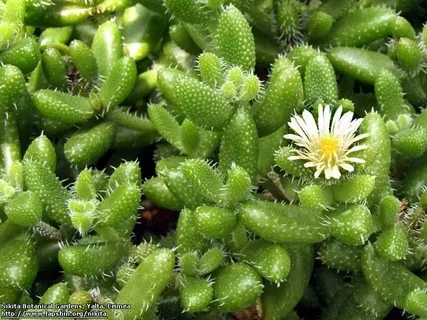
Most common pests and diseases
Here are some of the most common pests and diseases that can affect your Delosperma echinatum:
- Mealybugs: Small insects that feed on plant sap, leaving behind a sticky substance called honeydew.
- Mites: Microscopic pests that can cause damage to leaves, resulting in spots and discoloration.
- Root rot: Caused by excess moisture in the soil, which can lead to root rot.
- Powdery mildew: A fungus that manifests itself as a layer of white powder on leaves and stems.
- Stem canker: A bacterial infection that causes lesions on the plant’s stems.
- Wilt: Caused by a soil fungus, resulting in wilting and death of the affected parts of the plant.
Common Problems and Their Solutions
Mealybugs
- Solution: Remove the mealybugs manually with a cotton swab soaked in alcohol. If the infestation is severe, consider using a specific mealybug insecticide.
Mites:
- Solution: Apply a strong jet of water to the leaves to remove the mites. If necessary, use a mineral oil or insecticidal soap to control the infestation.
Root rot:
- Solution: Reduce the frequency of watering and make sure the soil has good drainage. Remove the affected parts of the plant and replant in new soil if necessary.
Powdery mildew:
- Solution: Remove the affected parts of the plant and apply a specific fungicide for powdery mildew. Make sure to improve air circulation around the plant to avoid favorable conditions for the fungus.
Stem canker:
- Solution: Remove the affected parts of the plant with sterilized scissors. Apply a bactericidal fungicide to prevent the infection from spreading.
Wilt:
- Solution: Discard infected plants to prevent the spread of the disease. Make sure you plant in well-drained soil and avoid excess moisture. Use crop rotation to avoid re-infecting the soil.
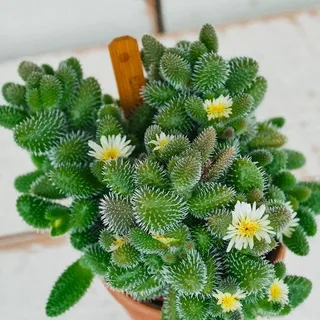
Curiosities and myths
Discover some fascinating curiosities and dispel myths about Delosperma echinatum:
Curiosities:
- Exotic Origins: Delosperma echinatum is native to the arid regions of South Africa, where it grows in extremely dry and sunny environments.
- Edible Flowers: The flowers of this succulent are not only beautiful, but also edible. They can be used to decorate salads and desserts, adding a touch of color and flavor.
- Extreme Resistance: Delosperma echinatum is known for its incredible resistance to heat and drought, making it a popular choice for low-maintenance and xeriscape gardens.
Myths:
- All Succulents Are Easy to Care For: Although succulents are generally considered low-maintenance plants, some, like Delosperma echinatum, have specific care requirements, such as full sun exposure and well-drained soil.
- All Succulents Are Toxic to Pets: Although many succulents contain toxic compounds, not all of them are harmful to pets. Delosperma echinatum is considered non-toxic to dogs and cats, but it’s always best to check before introducing any plant into a pet environment.
- Succulents Don’t Need Water: Although succulents are known for storing water in their leaves, they still need regular watering, especially during periods of active growth. It’s important to find a balance between adequate watering and avoiding excess moisture to avoid problems such as root rot.
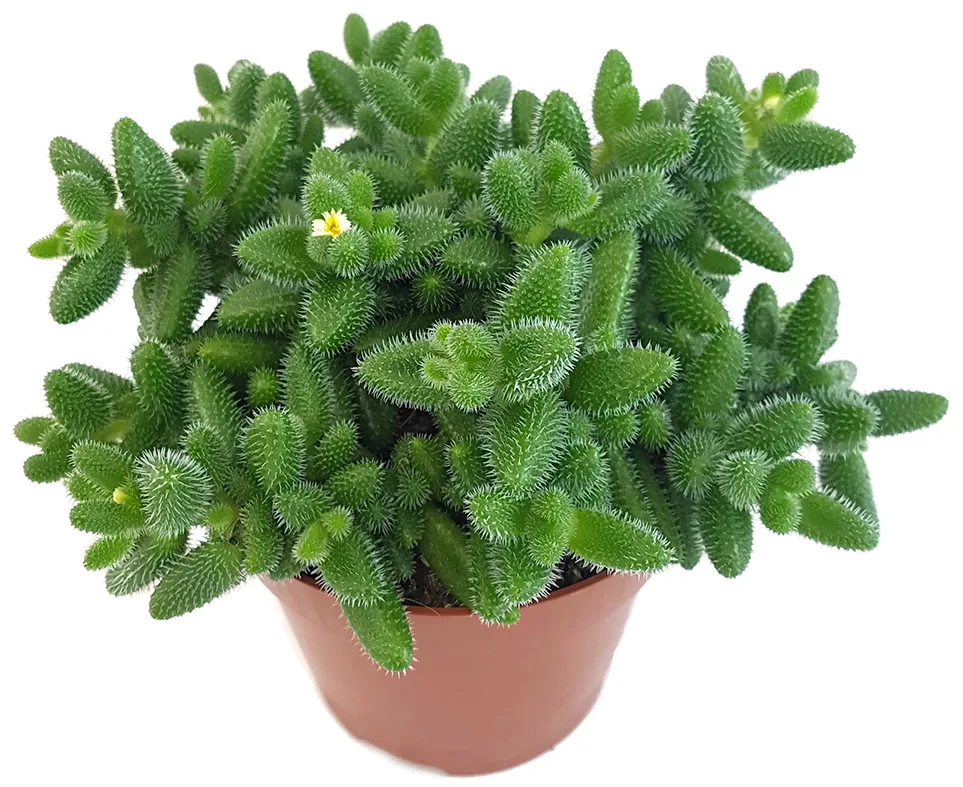
Conclusion
In conclusion, caring for Delosperma echinatum requires attention to detail, but the efforts are rewarded with its ornamental beauty and resilience. From choosing the right location with full sun exposure to correct watering and soil management, every step is crucial to ensuring the healthy flowering of this succulent. In addition, when dealing with pests and diseases, the readiness to identify the signs and apply appropriate solutions is fundamental to maintaining the plant’s health. With dedication and care, Delosperma echinatum can transform any garden into a vibrant and exuberant oasis, adding a dose of color and vitality to the environment.
In short, Delosperma echinatum is more than just a decorative plant; it is a symbol of resilience and beauty in the midst of adversity. Its unique characteristics, from its delicate edible flowers to its ability to thrive in arid conditions, highlight its importance both as a landscaping element and as a source of inspiration. By understanding its specific needs and being prepared to face challenges such as pests and diseases, plant lovers can fully enjoy the benefits of this enchanting succulent.
Frequently Asked Questions
Which succulents like shade?
Succulents that prefer shade are those that have adapted to receiving less direct sunlight and thrive in cooler, shaded environments. Some options include Haworthia, Sansevieria, Gasteria and some varieties of Sedum. These plants are ideal for places with indirect light or indoor areas with little light.
How to plant Delosperma?
To plant Delosperma, start by choosing a spot with full sun exposure and well-drained soil. Prepare the soil by removing debris and weeds, then dig a hole the right size for the seedling. Place the seedling in the hole and fill in the soil around it, pressing lightly to secure it. Water well after planting and keep the soil slightly damp until the roots become established.


